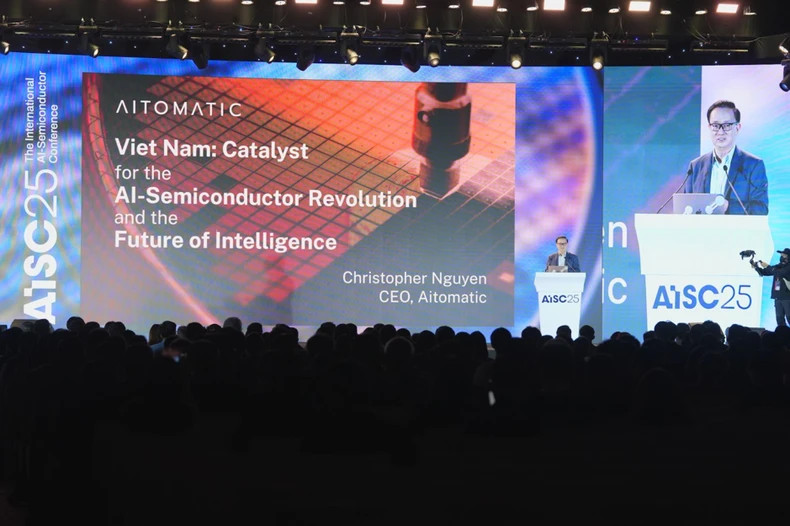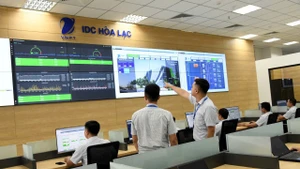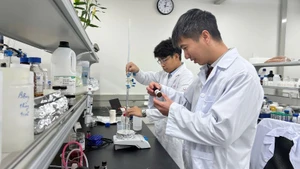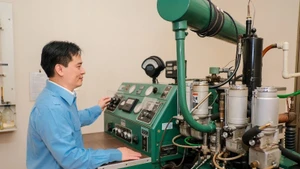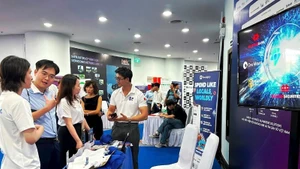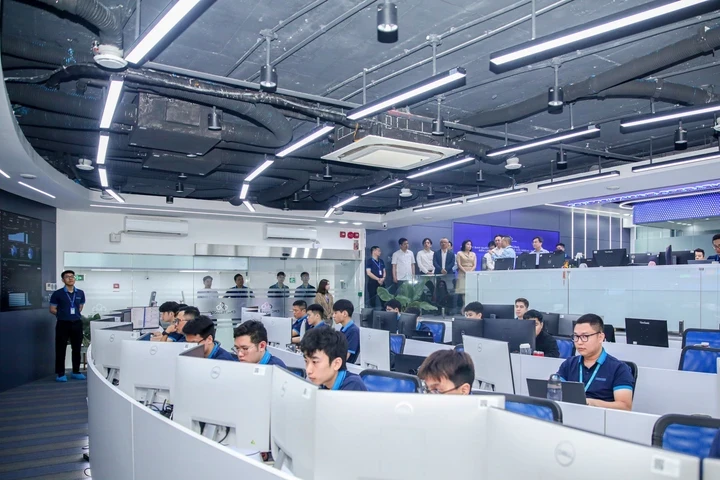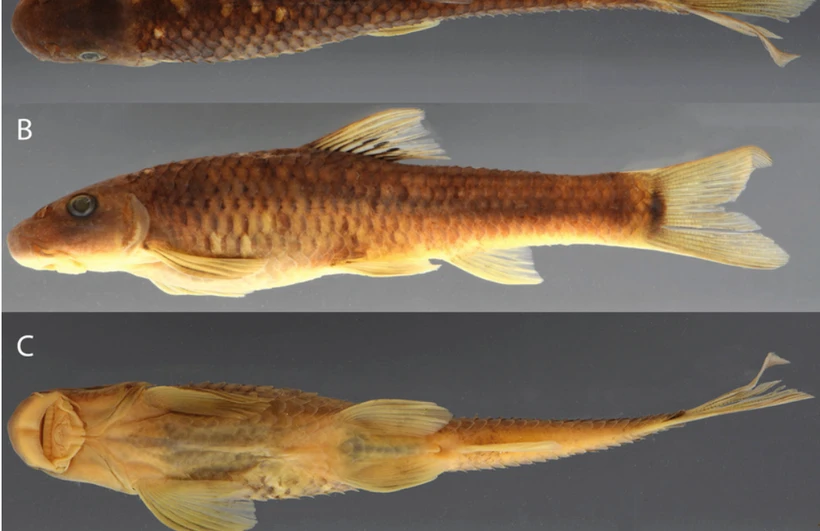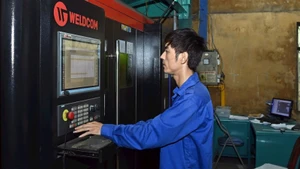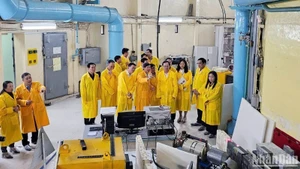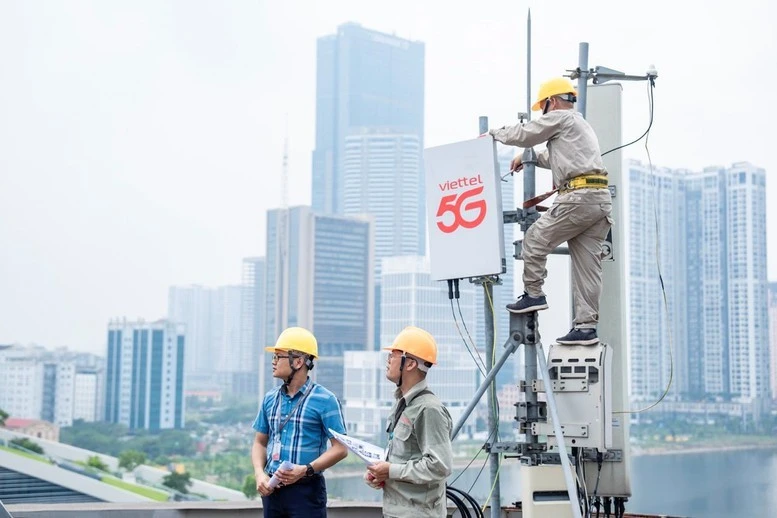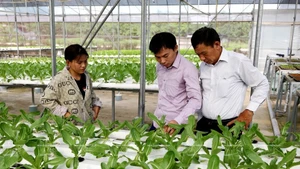Participants at the conference agreed that AI and semiconductors are currently the pillars for the future of the digital economy. These two elements are interdependent. Most notably, AI helps automate semiconductor manufacturing processes, predict and detect product defects, improve quality, and enhance production efficiency.
Christopher Nguyen, CEO of Aitomatic, cited an example that by 2030, some production facilities, especially advanced ones, will require stricter standards. For instance, in plasma processing, parameters such as fuel diameter, pressure, temperature, and dozens of other factors must ensure near-absolute accuracy. AI will contribute to ensuring this accuracy.
AI cannot develop without semiconductors, and vice versa, the semiconductor industry is changing rapidly thanks to advancements in AI. This is a symbiotic relationship where both drive each other forward.
CEO of Aitomatic Christopher Nguyen
“AI cannot develop without semiconductors, and vice versa, the semiconductor industry is changing rapidly thanks to advancements in AI. This is a symbiotic relationship where both drive each other forward,” he said.
Regarding the broader technological landscape, he referenced Moore's Law, affirming that the development pace of AI and semiconductors is extremely rapid. Processor technology undergoes significant improvements every 18 months.
The world market is witnessing remarkable growth, with demand for AI processing chips projected to continue rising strongly in the coming years. Countries such as the US, China, Japan, and the Republic of Korea are making bold investments in this field. The competition among leading technology nations is intense.
In chip manufacturing, Anna Goldie, a senior researcher at Google DeepMind, noted that while AI's computational needs are growing exponentially, hardware capabilities are not keeping pace, creating a widening gap.
To address this, new AI technologies such as AlphaChip - a method of designing chips using AI - have been introduced. She believes that applying AI accelerates chip design, reduces costs, and optimises performance.
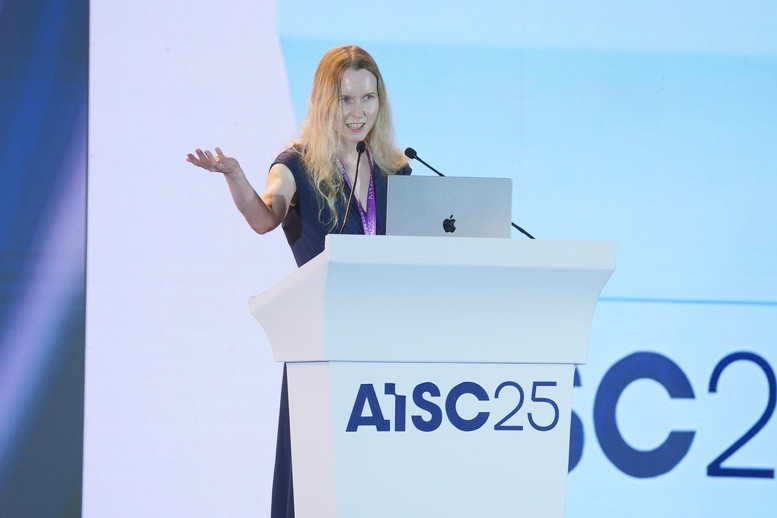 |
| Anna Goldie, a senior researcher at Google DeepMind, speaks at the conference |
She stressed that to fully exploit AI's potential, it is necessary to shorten the chip design cycle, improve algorithms, and maximise data utilisation.
“In the future, AI will not only enhance hardware but also drive breakthroughs in fields like medicine, finance, and industrial production,” she stated.
The AlphaChip method uses AI to optimise chips’ component layouts, reducing latency, saving power, and optimising production area. AI can improve chip design by shortening development time and enhancing product efficiency. AlphaChip has been applied to recent Google Cloud Tensor Processing Units (TPUs), achieving significant improvements over traditional design methods.
Meanwhile, Tran Thanh Long, a professor at the University of Warwick, briefed the participants on efforts worldwide to increase AI and semiconductor power.
He mentioned using memory stores and Bayes' theorem to improve AI's efficiency and scalability. Memory stores help AI retain information long-term and use past data to optimise decisions.
“Bayes' theorem supports AI in adjusting predictive probabilities based on new data, enabling systems to learn quickly and efficiently. This combination reduces computational resource requirements while maintaining high accuracy,” Long said.
This approach helps AI operate more smoothly in healthcare, industrial production, and automation. Notably, AI can handle data better without relying heavily on large data centres, saving costs and resources. As a result, systems become smarter, more efficient, and self-adjusting without needing vast amounts of data.
Ngan Vu from Google DeepMind presented research on using circuit neural networks to create efficient logic circuit designs. By applying simulated annealing algorithms and other optimisation techniques, her team aims to shorten the design cycle from concept to product.
One major challenge is balancing accuracy and efficiency in circuits, ensuring that designs work accurately and conserve resources. However, if the gap between AI software and hardware can be narrowed, it will open many new opportunities in the semiconductor industry.
“Applying AI to circuit design promises to change how the semiconductor industry operates, accelerating development and producing more optimal designs,” she noted.
The International Conference on Artificial Intelligence and Semiconductors (AISC) 2025 is jointly held by the Aitomatic (USA) and the National Innovation Centre (NIC) from March 12 to 14.
The event brings together over 1,000 leaders and experts from major tech companies like Google, NVIDIA, IBM, Meta, Intel, and Samsung.
The conference features key workshops on the semiconductor and AI technology revolution, exhibitions, investment and business networking, and a policy forum on Vietnam’s AI and semiconductor development in the new era.
It focuses on the convergence of AI and semiconductors, providing access to cutting-edge information, facilitating cross-border business connections, and affirming Vietnam's role in the global semiconductor and AI industry value chain.
